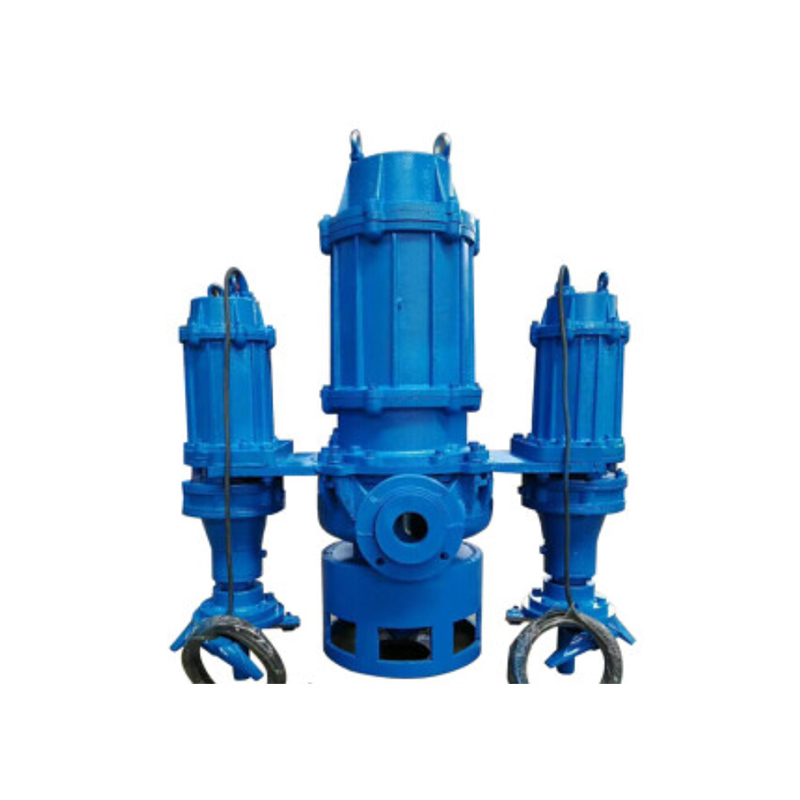Understanding Hydraulic Submersible Slurry Pumps: A Comprehensive Guide
In today's industrial landscape, the hydraulic submersible slurry pump stands out as a pivotal tool in various applications, ranging from mining and dredging to wastewater treatment and construction. In this comprehensive guide, we delve into the intricacies of this indispensable equipment, shedding light on its functionality, applications, benefits, and key considerations for optimal performance.
What is a Hydraulic Submersible Slurry Pump?
A hydraulic submersible slurry pump is a specialized piece of equipment designed to handle abrasive and viscous fluids containing solid particles. Unlike conventional pumps, which rely on electrical or diesel-driven mechanisms, hydraulic slurry pumps operate through hydraulic power derived from sources such as excavators, cranes, or dedicated power packs. This design facilitates their submersion into fluid-filled environments, allowing for efficient pumping of slurries without the risk of cavitation or air locking.

Components and Working Principle
Components:
Pump Body: The main housing that encases the internal components and facilitates fluid intake and discharge.
Impeller: A rotating component with vanes or blades that impart kinetic energy to the fluid, facilitating its movement.
Hydraulic Motor: Converts hydraulic energy into mechanical energy to drive the impeller.
Wear Parts: Replaceable components designed to withstand abrasion and prolong the pump's lifespan.
Working Principle:
When in operation, the hydraulic motor activates the impeller, creating a centrifugal force that draws slurry into the pump body through the intake port. As the slurry passes through the impeller, the rotating blades impart kinetic energy, causing the fluid to accelerate and be discharged through the outlet port at high velocity. The wear-resistant materials of the pump components ensure durability and sustained performance, even when handling highly abrasive fluids.
Applications of Hydraulic Submersible Slurry Pumps
Mining and Mineral Processing:
In the mining industry, hydraulic submersible slurry pumps play a crucial role in dewatering operations, removing sludge and tailings from excavation sites, and transporting ore slurries. Their robust construction and ability to handle high concentrations of solids make them ideal for challenging mining environments.
Dredging and Harbor Maintenance:
For dredging projects aimed at maintaining waterways, ports, and harbors, hydraulic slurry pumps excel in removing sediment, silt, and debris from underwater surfaces. Their versatility in handling various types of slurries, including sand and gravel mixtures, ensures efficient dredging operations with minimal downtime.
Wastewater Treatment:
Municipalities and industrial facilities rely on hydraulic submersible slurry pumps for transferring and processing wastewater containing solid contaminants. These pumps facilitate the movement of sludges and slurry mixtures within treatment plants, ensuring effective filtration and treatment processes.
Construction and Tunneling:
In construction projects involving tunneling, foundation excavation, or underground utility installation, hydraulic slurry pumps are indispensable for dewatering and maintaining dry working conditions. Their compact design and ability to operate in confined spaces make them ideal for construction sites with limited access.
Benefits of Hydraulic Submersible Slurry Pumps
Versatility: Hydraulic slurry pumps are capable of handling a wide range of fluids, from viscous slurries to abrasive mixtures, making them suitable for diverse applications across industries.
Efficiency: The hydraulic-driven mechanism ensures energy-efficient operation, with minimal power losses compared to traditional electric or diesel pumps.
Durability: Constructed from high-quality materials and equipped with wear-resistant components, hydraulic slurry pumps offer long-term reliability and minimal maintenance requirements.
Submersible Design: The ability to operate underwater enables these pumps to access hard-to-reach areas, such as underwater excavation sites or submerged pipelines.
Customization: Hydraulic slurry pumps can be tailored to specific application requirements, with options for various flow rates, pressure capacities, and material compatibility.
Conclusion
In conclusion, the hydraulic submersible slurry pump emerges as a versatile, efficient, and durable solution for handling abrasive fluids and solid-laden slurries across a wide range of industries. With its submersible design, robust construction, and customizable options, this equipment proves indispensable in mining, dredging, wastewater treatment, construction, and other applications where reliable fluid handling is paramount.


